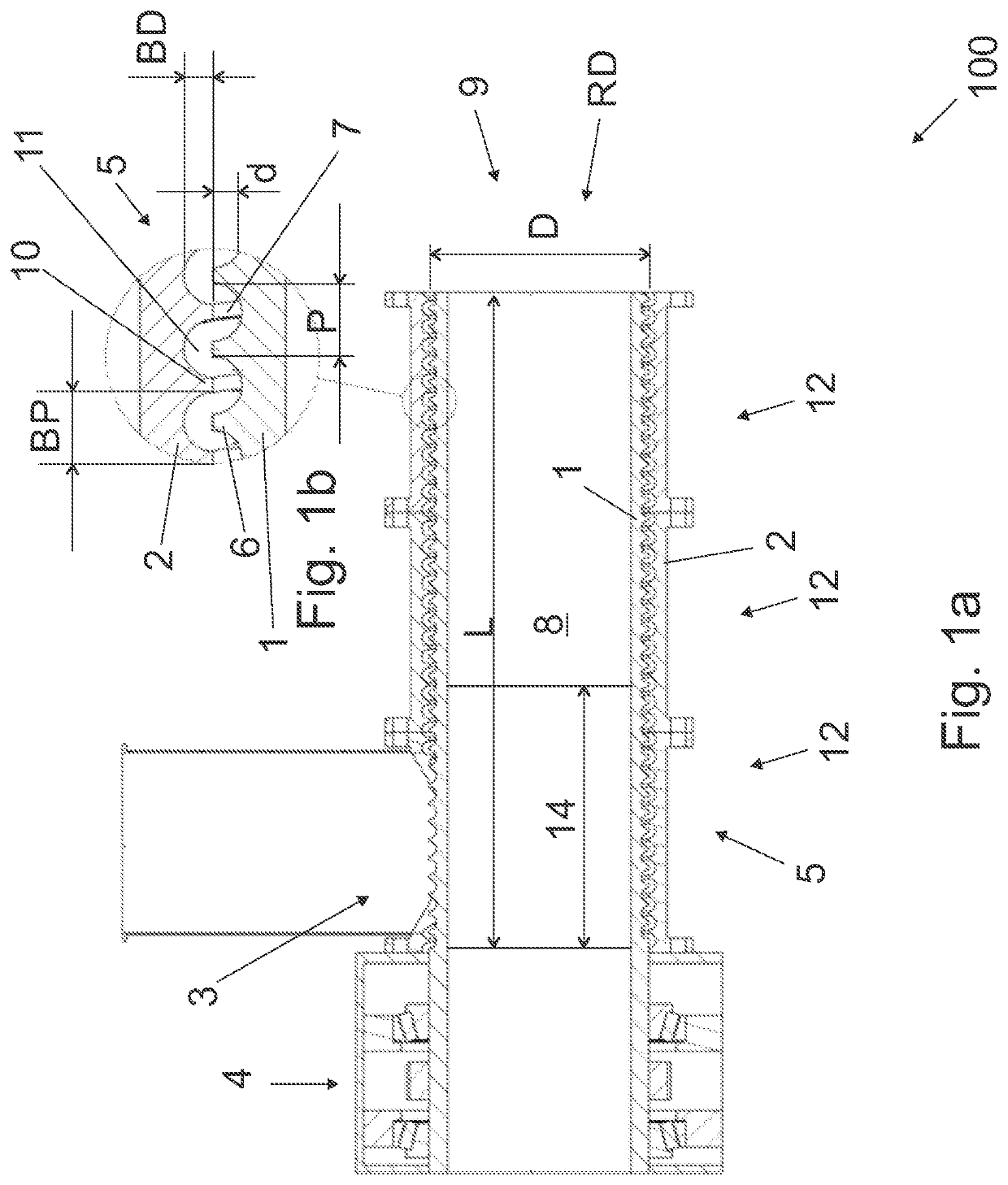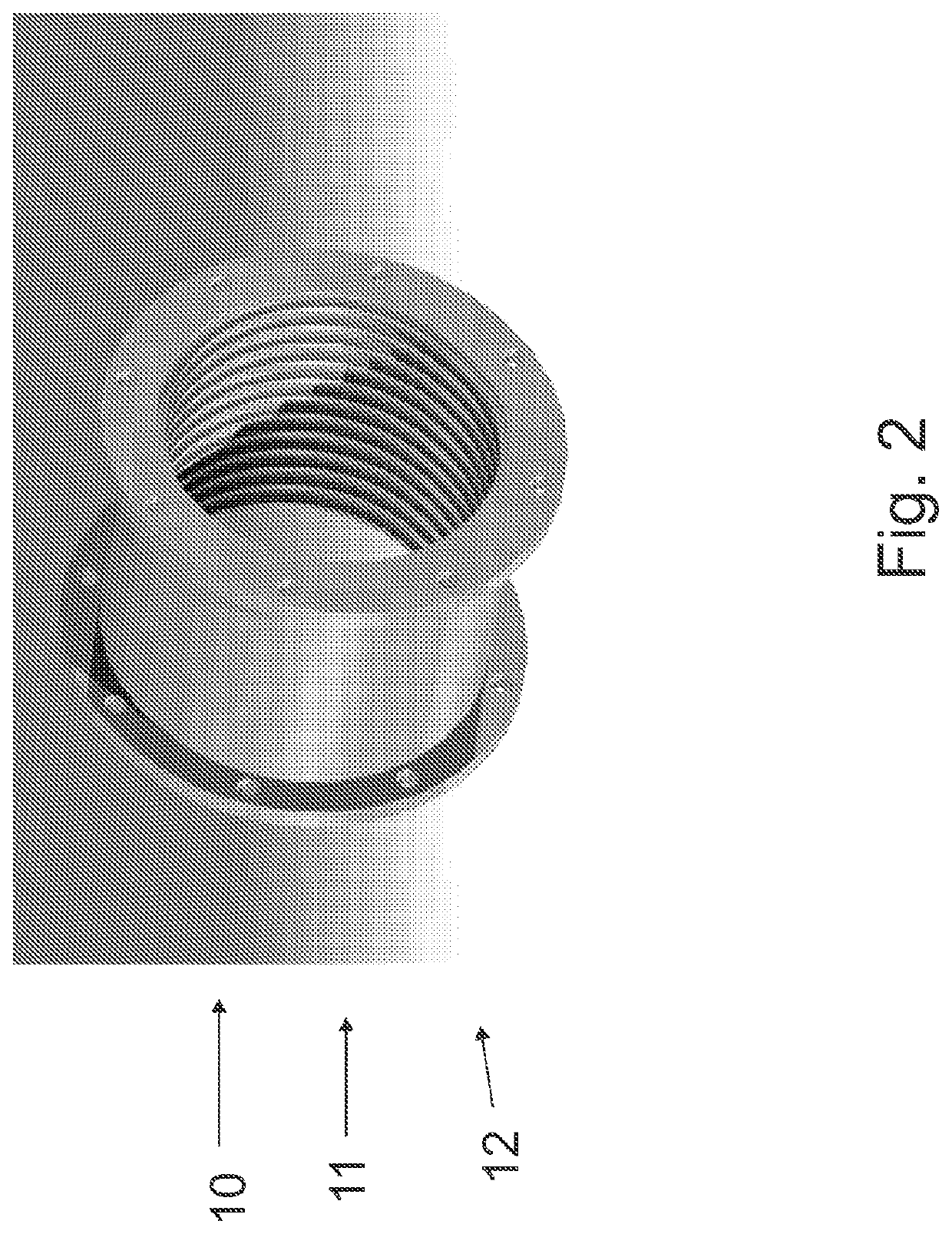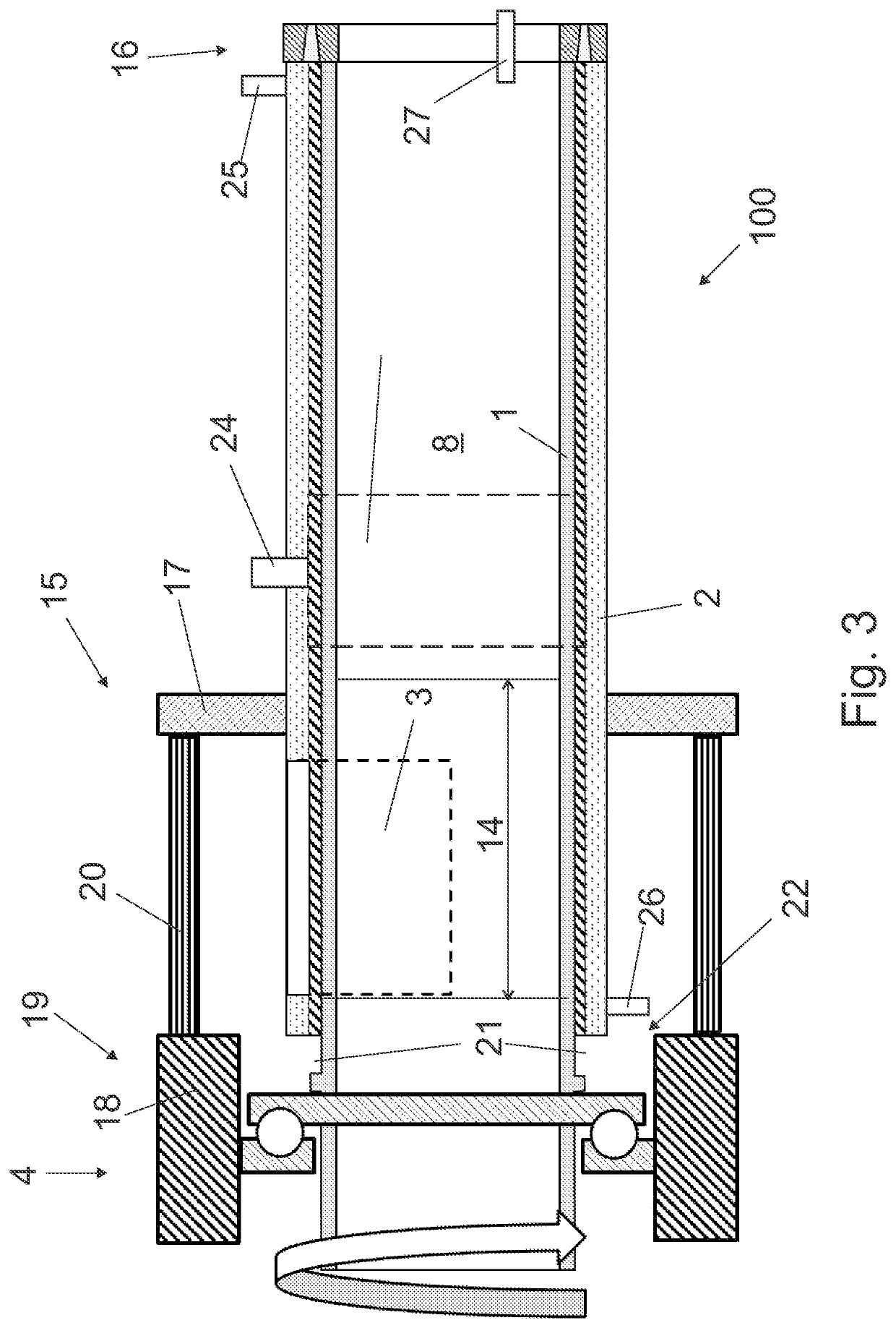Method of carrying out thermolysis and thermolysis apparatus
a technology of thermolysis and apparatus, which is applied in the direction of mechanical conveying coke ovens, products, educts, etc., can solve the problems of inability to achieve the high temperature needed in thermolysis in a techno-economically feasible way, small opening area of feeding zone, and difficulty in effective heating, etc., to achieve the effect of reducing the volume of the feeding material, reducing the difficulty of feeding, and increasing the difficulty of feeding
- Summary
- Abstract
- Description
- Claims
- Application Information
AI Technical Summary
Benefits of technology
Problems solved by technology
Method used
Image
Examples
Embodiment Construction
[0040]FIG. 1a is a schematic side view of an apparatus in partial cross-section, and FIG. 1b is a schematic view of a detail of the apparatus shown in FIG. 1a in partial cross-section.
[0041]The apparatus is a single-screw extruder 100. The extruder 100 is preferably capable to process any kind of organic material (material hereafter) to be thermolysed, and it may also be used as pre-thermolyser. The form of the material does change when passing through the extruder, i.e. material or mixture of materials may, for instance, compress, compact, consolidate, grind, break apart, melt, react, decompose, and / or degrade.
[0042]The extruder 100 is a single-screw extruder comprising a cylindrical rotor member 1, a barrel 2, a feed opening 3, and a drive system 4 for the rotation of the rotor member 1 in the barrel 2.
[0043]The rotor member 1 has diameter D and length L. In an embodiment, the relation of the length to the diameter, i.e. L:D, is in range of 2:1 to 4:1.
[0044]The cylindrical outer s...
PUM
| Property | Measurement | Unit |
|---|---|---|
| temperature | aaaaa | aaaaa |
| diameter | aaaaa | aaaaa |
| length | aaaaa | aaaaa |
Abstract
Description
Claims
Application Information
 Login to View More
Login to View More - R&D
- Intellectual Property
- Life Sciences
- Materials
- Tech Scout
- Unparalleled Data Quality
- Higher Quality Content
- 60% Fewer Hallucinations
Browse by: Latest US Patents, China's latest patents, Technical Efficacy Thesaurus, Application Domain, Technology Topic, Popular Technical Reports.
© 2025 PatSnap. All rights reserved.Legal|Privacy policy|Modern Slavery Act Transparency Statement|Sitemap|About US| Contact US: help@patsnap.com



